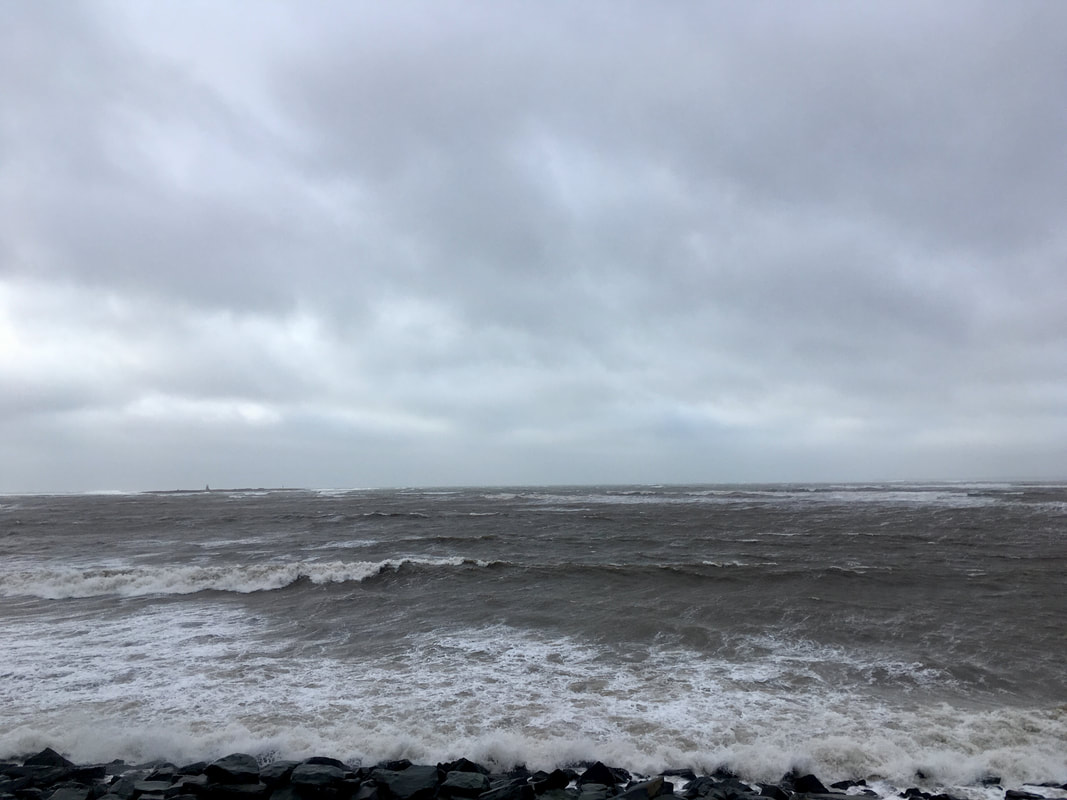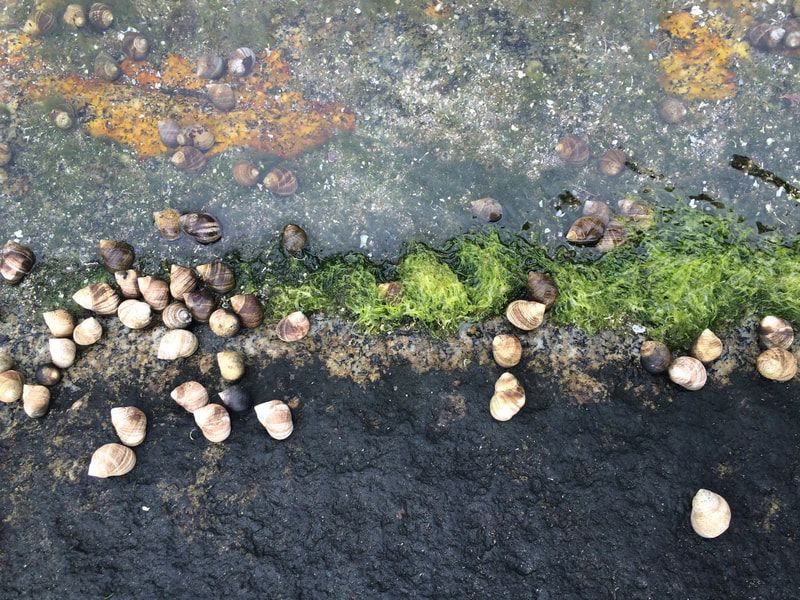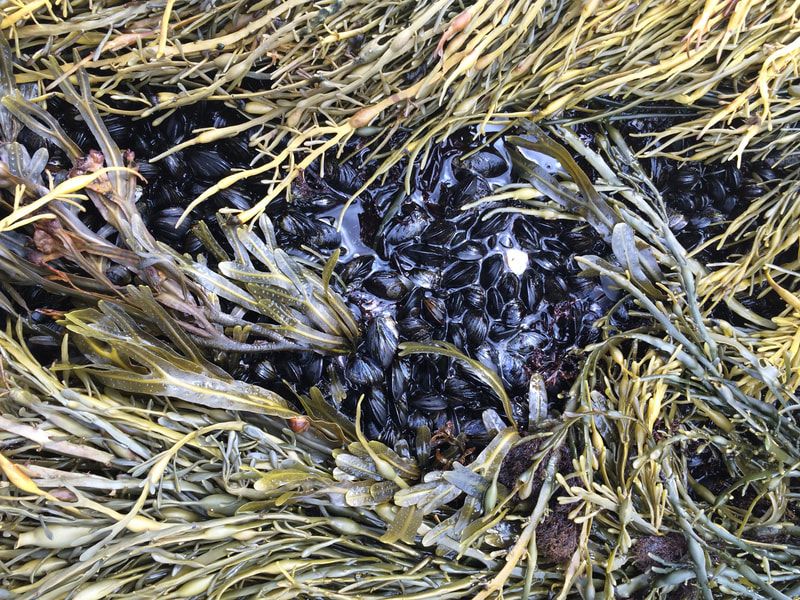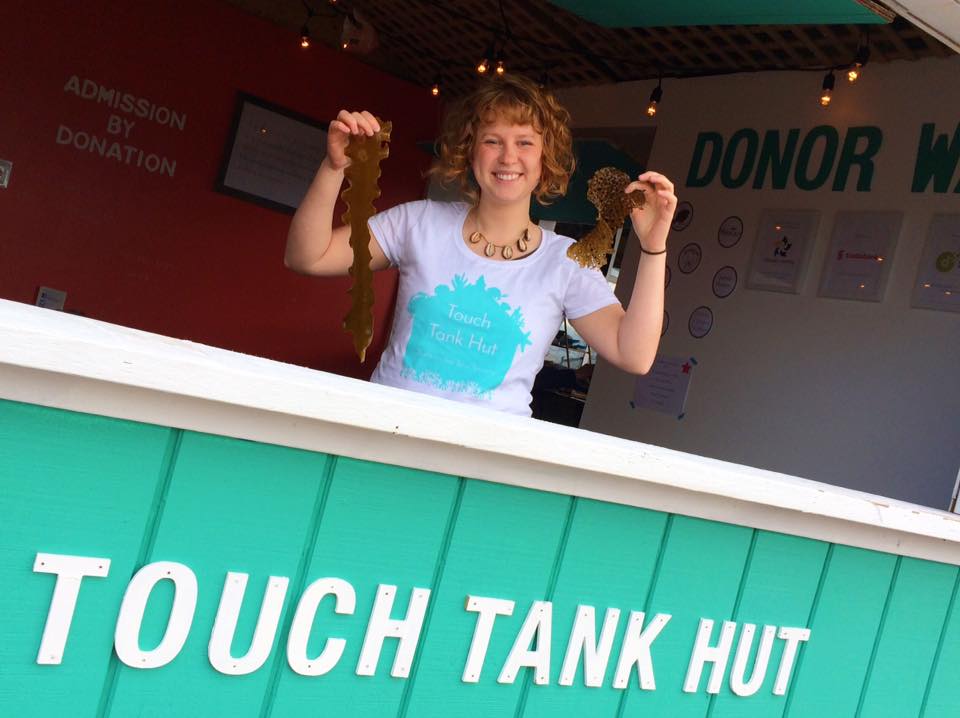|
by Kaitlin Burek When it is raining, I take out my boots and jacket. When it is snowing, I add a scarf and some mittens. When it is windy, I increase my layers and quicken my steps. It is safe to say, that since I moved to the Maritimes, I have adapted to the changing – often unexpected – weather conditions. My usual response to downpours, blizzards, and wind storms is to stay inside with a bag of storm chips and peak out the window to see how nature is fairing. My view consists of trees, buildings, and the unfortunate person that didn’t reach shelter in time. What I can’t see from my window during these weather events is the ocean, but I can envision the swell and the crashing waves. What is harder to imagine is how our beloved ocean organisms survive – animals and algae alike! Winter storms in Eastern Passage. The intertidal zone in Nova Scotia is characterized by things like crabs, snails, mussels, barnacles, and rockweed. These animals are not often described as being hardy, but they should be, as their adaptations allow them to survive in a very volatile environment. The environment is difficult because not only do these animals have to deal with stressors that originate in the ocean, but they also must worry about what comes from the land and atmosphere – eek! Some animals, like crabs, find protection by hiding in cracks or under boulders while others, like snails, carry protection on their back. Snails heading for the cracks! Photo by Kaitlin. Nonmobile animals also have found creative ways to adapt to stormy weather; mussels are streamlined, hold onto stable rocks using fine threads, and huddle together; barnacles close their calcareous bodies; and rockweed holds on tight to rock with fancy-dancy* discoid anchoring structures. Whether it is a behavioural or a physical adaptation, the intertidal ocean organisms are designed to survive and thrive! * Although I wish I could tell you differently, this is not a scientific term. Use with caution. Mussels clumping. Photo by Kaitlin. If we were to move deeper into the subtidal, not only would the organisms change, but so would the impact of weather events. If the seabed is further from the ocean surface, it is less impacted by the weather – think of the depth as a kind of buffer zone. Since the organisms are less impacted, they do not dedicate as much energy into weather-protective adaptations. You still see adaptations however; sea stars don suction cup-like tube feet and other benthic invertebrates remain streamlined. The organism’s primary concern in the subtidal, unlike the intertidal, is not to adapt to weather but instead put energy into fleeing predators and finding food – how cool! If we were to go deeper in the ocean you may notice some differences that exist between that ecosystem and the one that exists in the intertidal and the subtidal. First off, it is dark, I mean no-sun-is-penetrating dark, and it is cold. What you will not notice however, is sloshing water caused from overhead weather events. Other than debris falling from surface waters, there would be no evidence of a weather event because wave energy does not attenuate deep enough to impact the organisms that live there. So, my advice to you is if you really want to escape Maritime weather events you should hop, skip, and jump to the bottom of the ocean. Happy splashing!
0 Comments
Leave a Reply. |
Categories
All
We send blog recaps with in all our quarterly newsletters!
|



